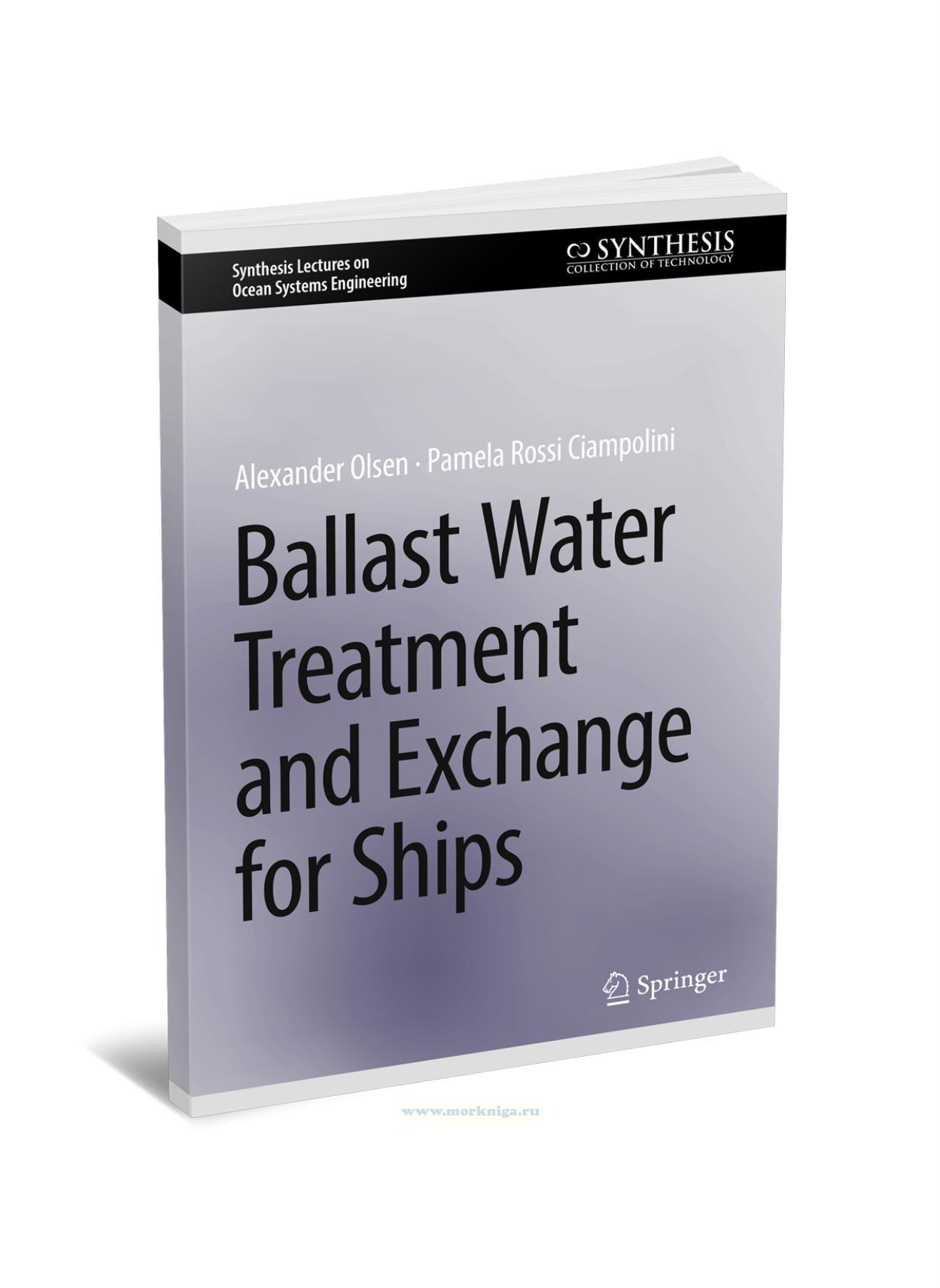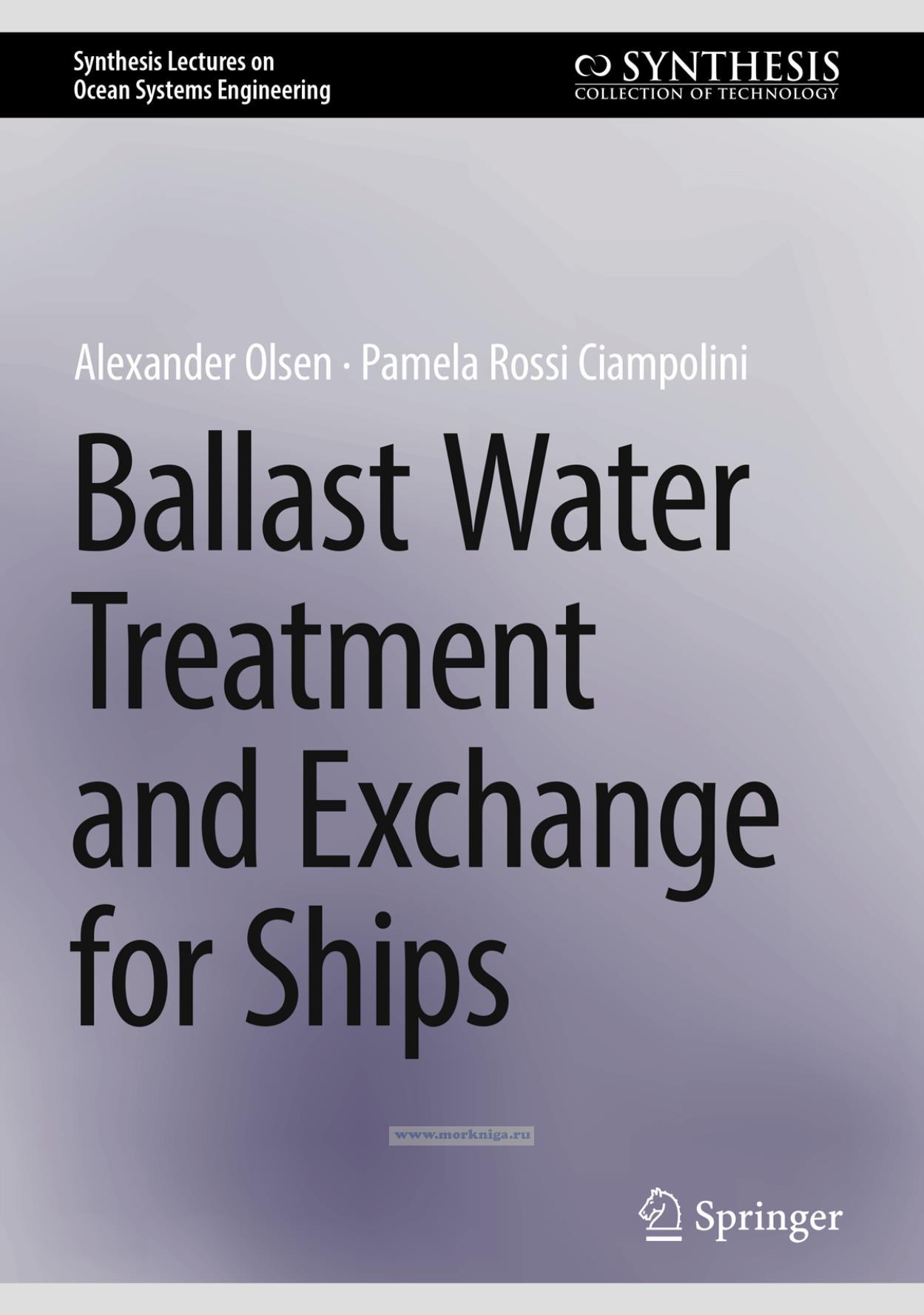Ballast Water Treatment and Exchange for Ships/Очистка и замена балластных вод на судах
Книга на английском языке
The inadvertent transfer of harmful aquatic organisms and pathogens in the ballast water of ships has been determined to have caused a significant adverse impact to many of the world's coastal regions. The international maritime community, under the auspices of the IMO has developed several documents, including the “International Conventions for the Control and Management of Ship's Ballast Water and Sediments, 2004 ”, (Ballast Water Management Convention), which are aimed at preventing the introduction of unwanted aquatic organisms and pathogens through the discharge of ballast water and sediments. The Ballast Water Management Convention applies to vessels registered in a country which is party to the Convention and to those vessels registered in other countries when operating in the waters of a country which is party to the Convention. It has been determined that ballast water exchange does not provide adequate protective measures to prevent damage from organisms and pathogens carried in a vessel's ballast, even though exchange was considered to be acceptable as an interim solution. This book includes updates for the clarification of Survey requirements and adds the definition of biological commissioning, testing as well as requirements for Class approved Service Providers to conduct biological commissioning testing. Moreover, this book includes updates due to the adoption of the requirements from IACS UR M74, Rev. 2 and UR F45 and is applicable for existing ships, where an application for approval for the plans of BWMS is made on or after 1 July 2022; or for new ships contracted for construction on or after 1 July 2022.
Contents
Part I Ballast Water Treatment
1 Vessels with Ballast Systems Classification and Documentation
1.1 General
1.2 Objective and Scope of Classification
1.3 Basis of Notation
1.4 Classification Symbol and Notation
1.4.1 Systems Installed Under Class Survey
1.4.2 Systems not Installed Under Class Survey
1.5 Government Regulations
1.5.1 United States Coast Guard Type Approval
1.6 Vessel Classification and Documentation Requirements
1.6.1 Ship Plans and Operational Manuals
1.6.2 Required Specific Certification and Documentation
1.6.3 Engineering Review
1.6.4 Class Surveys
2 Ballast Water System General Requirements
2.1 Ballast Water Discharge Standards
2.2 System Certification and IMO Member State Type Approval
2.3 Class Approval of the Ballast Water Management System
2.3.1 Certification Requirements
2.3.2 Certification Under a Class Type Approval (TA) Programme
2.4 Record Keeping and Reporting
2.4.1 Ballast Water Management Plan
2.4.2 Ballast Water Record Book
3 General Ballast Water System Related and Installation Criteria Requirements
3.1 General
3.2 Common Criteria
3.2.1 Ballast Water Management System Locations
3.2.2 Arrangements
4 Ventilation System Related and Installation Criteria Requirements
4.1 General
4.1.1 Ballast Water Management Systems Installed in Non-hazardous Areas
4.1.2 Ballast Water Management Systems Installed in Hazardous Areas
4.2 Additional Requirements
5 Ballast Water Management System Installations in Hazardous Areas on the Deck of Oil Carriers, Chemical Carriers and Tank Barges
5.1 General
5.2 Requirements for Non-hazardous Ballast Water Management System Compartments
5.3 Requirements for Hazardous Ballast Water Management System Compartments
5.4 Acceptable Arrangement for Sampling System Piping in a Non-hazardous Area Connected to a BWMS in a Hazardous Area of an Oil or Chemical Tanker
5.5 Acceptable Isolation Arrangement of a BWMS Dosing Piping System on Oil or Chemical Tankers (from a Non-hazardous Area to a Hazardous Area)
5.5.1 Non-hazardous Area
5.5.2 Hazardous Area
5.6 Acceptable Isolation Arrangement of a BWMS Dosing Piping System on Oil or Chemical Tankers (from a Non-hazardous Compartment to a Non-hazardous Area Routed Through a Hazardous Area)
5.6.1 Non-hazardous Areas (Compartment in the Cargo Block and Engine Room)
5.6.2 Hazardous Areas
5.6.3 Alternative Location of Safety Pipe Duct in Non-hazardous Area
5.7 Ballast Water Management System in a Non-hazardous Area Serving Ballast Tanks in a Hazardous Area
5.7.1 General Guidelines for All Installations
5.7.2 Using a Loop Seal
5.7.3 Using a Water Column
5.7.4 Using a Spool Piece
5.7.5 Using a Double Block and Bleed Assembly
5.8 Ballast Water Management System in the Engine Room Serving a Non-hazardous AFT Peak Tank and Simultaneously Serving Hazardous Ballast Tanks in the Cargo Block
5.9 Ballast Water Management System Installations on Dedicated Articulated Tug Barge (ATB) Combinations
5.9.1 Requirements for All Installations
5.9.2 Configurations of Ballast Water Management Systems
6 Ballast Water Management System Installations in Steering Gear Compartments
6.1 General
6.2 Structural Considerations and the Effects of Corrosion
6.2.1 Structural Considerations
6.2.2 Corrosion Effects
7 Ballast Water Management System Infrastructure
7.1 General
7.2 Ballast System
7.2.1 Ballast Pumps
7.2.2 Piping Components Materials and Design
7.2.3 Vent Piping
7.2.4 Ballast Water Sampling Piping
7.2.5 Remote Control Valves
7.2.6 Damage Stability Consideration
7.2.7 Ballast Water Stripping
7.2.8 Bypass Arrangements
8 Ballast Water Management System Related Electrical Systems and Instrumentation
8.1 General
8.2 Electrical Systems
8.2.1 Load Analysis
8.2.2 Computer-Based Systems
8.3 Instrumentation
8.3.1 Local Instrumentation
8.3.2 Ballast Control Station Displays
8.4 Additional Arrangements for the Placement of Electrical Equipment in Hazardous Areas
9 Ballast Water Separation and Treatment Systems
9.1 Mechanical Systems
9.2 Physical Treatment Systems
9.2.1 Cavitation and Ultrasound Systems
9.2.2 Thermal Systems
9.2.3 Inert Gas Deoxygenation Systems
9.2.4 Ultraviolet (UV) Disinfection Systems
9.3 Chemical Treatment/Active Substances Systems
9.3.1 Prepared Chemical Treatment Systems
9.3.2 Safety Assessment
9.3.3 Ozone Injection Systems
9.3.4 Electro Chlorination Systems
9.4 Combination Treatment
9.4.1 Other Treatment Types
9.5 Sediment Control
10 Personal Protective and Firefighting Equipment and Safety Arrangements
10.1 General
10.2 Firefighting Equipment and Arrangements
10.2.1 Recording in the Ship’s Manual
10.2.2 Spaces Used for the Storage of Chemicals
11 Operational Management of the Ballast Water Management System
11.1 Operating and Safety Manuals
11.2 Ballast Water Management Officer
11.3 Personnel Duties and Training
11.4 Survey Requirements
11.4.1 Initial Survey
11.4.2 Shipboard Function Test
11.4.3 Validating Compliance with Regulation D-2 During Ballast Water Management System Commissioning
11.4.4 Surveys After Construction
Part II Ballast Water Exchange
12 Ballast Water Exchange Requirements
12.1 Ballast Water Exchange Standard
12.1.1 Where Ballast Water Exchange is to Be Conducted
12.1.2 Ballast Water Management Implementation Schedule
12.1.3 Ballast Water Exchange Methods
12.1.4 Sequential Method
12.2 Stability
12.2.1 Intact Stability
12.2.2 Damage Stability
12.2.3 Offshore Units
12.2.4 Longitudinal Strength
12.2.5 Sloshing
12.2.6 Wave-Induced Hull Vibrations
12.2.7 Over- and Under-Pressurisation of Tanks and Holds
12.2.8 Free Surface Effects
12.2.9 Forward and Aft Drafts
12.2.10 Propeller Immersion
12.2.11 Bridge Visibility
12.2.12 Data, Tables and Forms to Be Included
12.2.13 Flow-Through Method
12.2.14 Dilution Method
13 Ballast Water Exchange System Design and Construction
13.1 General
13.2 Ballast Piping
13.3 Ballast Pump
13.4 Ballast Valve Arrangements
13.5 Sea Chests and Shipside Openings Intended for Ballast Water Exchange
13.6 System Arrangements
13.7 Control Features
13.8 Ballast Tanks
13.9 Sampling
14 Ballast Water Management Plan
14.1 General
14.1.1 Maintenance of the Ballast Water Management Plan
14.1.2 Development of the Ballast Water Management Plan
14.2 Preamble
14.3 Introductory Text
14.4 Vessel Particulars
14.5 Crew Review/Revision History
14.5.1 Crew Review
14.5.2 Revision History
14.6 General
14.7 Carriage of Ballast Water
14.8 Purpose of Ballast Water Management
14.9 Record Keeping
14.10 Ballast Water Management Plan
14.11 General
14.12 Drawings and Data
14.12.1 Ballast Tank Arrangements
14.12.2 Ballast Water Capacity Plan
14.12.3 Pumping and Piping Arrangements
14.13 General
14.14 Sampling Points
14.15 Exchange Guidance
14.16 General Ballast Water Management Precautionary Practices
14.16.1 Avoiding Unnecessary Discharge of Ballast Water
14.16.2 Minimising the Uptake of Harmful Aquatic Organisms, Pathogens, and Sediments
14.17 Exchange at Sea
14.18 General
14.19 General
14.20 Method(S) Used
14.20.1 Sequential Method
14.20.2 Flow-Through Method
14.20.3 Dilution Method
14.21 Ballast Water Exchange Operation Spreadsheet
14.22 General
14.23 Sediment Management
14.24 General
14.25 Communications Directory
14.26 General
14.27 Officer in Charge of Ballast Water Exchange
14.28 Vessel’s Master
14.29 General
14.30 Record Book and Reporting Forms
14.31 General
14.32 Crew Training and Familiarisation
14.33 Documentation
Annex 1: Ballast Water Management Plan
Annex 2: Ballast Water Record Book
Glossary of Terms

